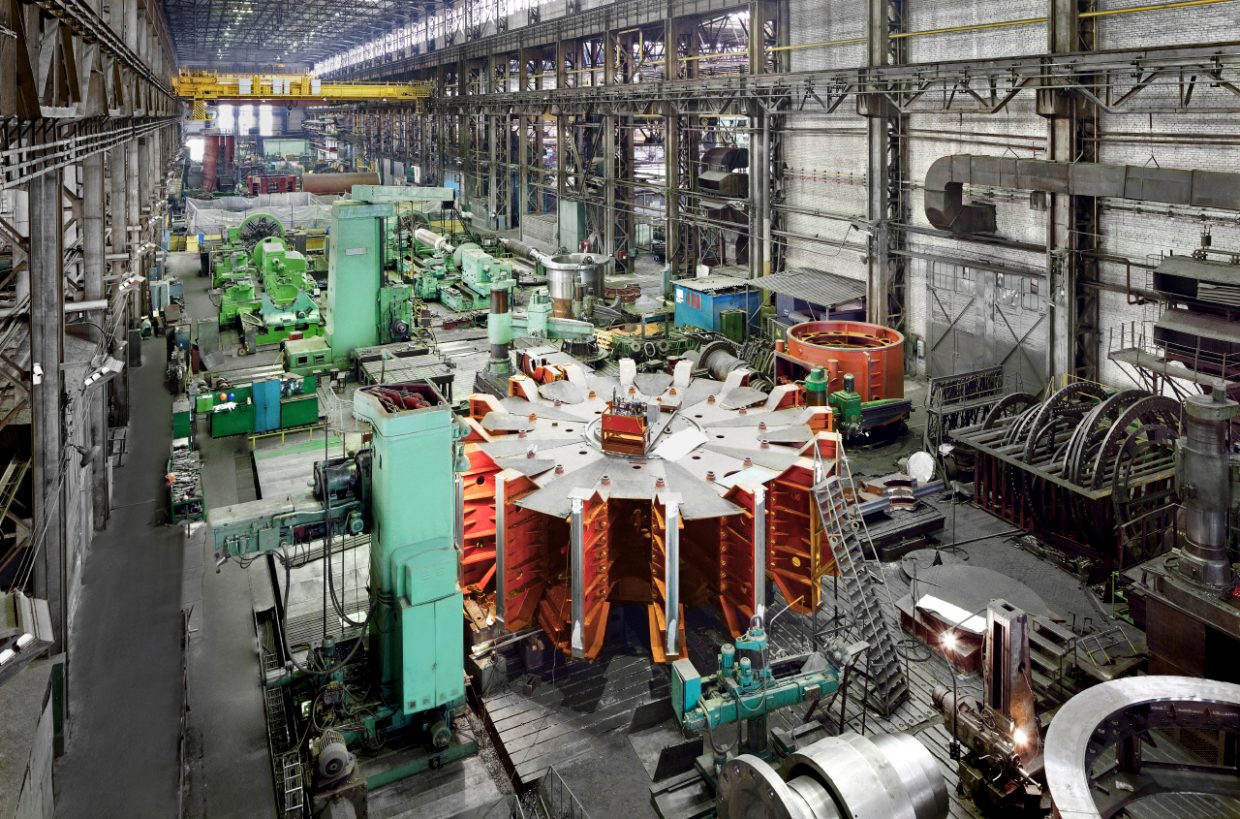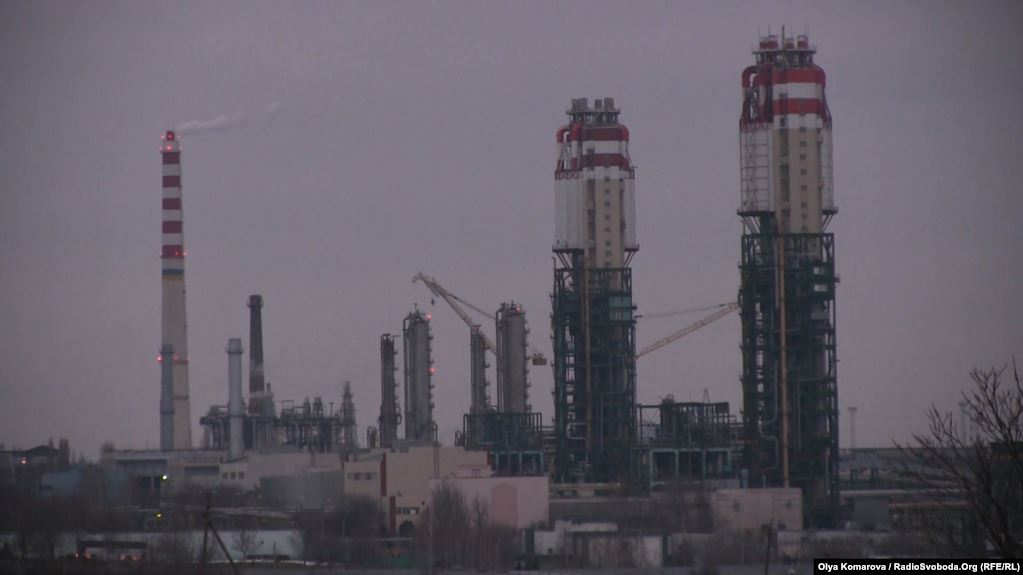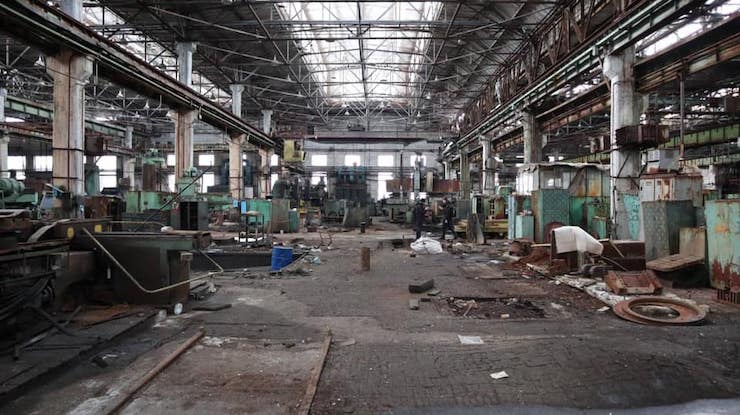What should be expected from privatization nowadays and how the interests of the oligarchs are involved?
Whether it be due to bad memories from the 1990s or fear for the future, there is no support from society for the government’s decision to privatize large state enterprises. According to research conducted by the Ilko Kucheriv Democratic Initiatives Foundation together with the Kyiv International Institute of Sociology, the process of privatization made it onto the list of three government steps with which Ukrainians don’t agree with. 55% of respondents are against it, with only 22% in favor. Other unpopular decisions include launching the land market and legalizing gambling. The research was conducted in 110 locations in all Ukrainian oblasts (with the exception of the occupied regions).
Read also: Zelenskyy’s “honeymoon period” over as 40% believe Ukraine moves in wrong direction
At the beginning of November, the Ukrainian president Volodymyr Zelenskyy ordered 500 state enterprises to be transferred to the State Property Fund for big and small privatization by 31 December 2019. The State Property Fund later named 20 large enterprises for priority sale. Further, the president ordered the first bidding to be carried out before 1 April 2020.
Before it, Tymofiy Mylovanov, the Minister of Economic Development, Trade and Agriculture of Ukraine described the future process,
“There are criteria according to which we define what has to be privatized and what has not. These criteria are strategic importance of an enterprise, serviceability of an enterprise and its profitability.”
Describing strategic importance, Mylovanov gave an example of an enterprise producing tanks or bullets. Even though these products can be bought elsewhere, for Ukraine they are a strategic point of production which cannot be sold, for if a situation should arise where Ukraine lacks them, another side might prevent another producer from selling them to the country,
“It’s related not only to enterprises as to legal entities but for the assets as well. For example, airports. Maybe, unimportant airports can be privatized. However, we can’t sell ports, railway stations, critical infrastructure. Port waters... So a port itself might be private, however, we will not allow purchasing the water and then not allowing anyone into it.”
Explaining serviceability the Minister set an example of the state enterprise ProZorro, which is a platform for state tender purchases. It cannot become private as purchasing is a state function that cannot be implemented by another party.
Answering the question on the time-frames Mylovanov clarified that small privatization is already ongoing, and that big privatization is a political, economic, anti-corruption question.
The greatest success

Reprivatization of Kryvorizhstal (now ArcelorMittal), Ukraine's largest integrated steel company located in Kryvyi Rih back in 2005, is considered as the major success story of Ukrainian privatization.
It brought $4.8bn to the country and increased the amount the state received from the first privatization in 2004 by 5.7 times. The foreign company Mittal Steel Germany GmbH won the privatization bidding. Two nationwide channels broadcasted the auction. It was the first time the whole country had observed such a process.
However, as mentioned the success was not a result of the first attempt at privatization.
At first, Kryvorizhstal was sold to private investors in 2004. There were six applicants for the competition. However, the conditions were set in a way that only the industrial-financial consortium Investment and Metallurgical Union could become a buyer. The actual founders of it were Ukrainian oligarchs Rinat Akhmetov and Viktor Pinchuk. The process was dealt with in court. However, the court recognized it as legal.
Only after the 2004 Orange Revolution and change of power in the country was the deal subsequently declared illegal, with the government making a decision on the second sale of 93.02% of the enterprise’s shares. Despite parliament’s attempts to spoil the deal, the enterprise was sold off for the second time.
It is noteworthy that after the purchase the new owner invested millions of dollars in the modernization of the production as well.
The stories of failures
The Oligarch system was established in Ukraine after the Soviet Union collapsed. To a large extent, it came as a result of the privatization of state assets. In Soviet times it was in fact the Communist party leaders who disposed of these assets.
The Soviet production legacy was one of large factories and enterprises being allocated amongst the very few, who were interested more in stealing from the enterprises than in developing them. The process of theft was supported by the government.
The ex-president Leonid Kuchma is most associated with establishing the oligarchic system in Ukraine. During his period in office, the majority of well known Ukrainian oligarchs became established.
The oligarchic system is based on informal cooperation between the oligarchs and state institutions. Known in Ukraine as clans or financial-industrial groups, these cooperative groups appeared on a regional basis. The strongest were associated with the former communist party leaders and criminal groups linked to them in Donetsk, Kyiv, Dnipropetrovsk oblast and Kharkiv.
Except for the above-mentioned example of the Kryvoryzhstal privatization, in Ukraine privatization was associated with opaque processes and dividing enterprises amongst certain people. As a result, the state received much less from privatizing assets than it should have if there had been real competition. In 2011-2013, sale of the state energy companies was the most prominent example of intransparency.
The government of the ex-president Petro Poroshenko
also announced major privatization schemes after coming to power. However, now it is associated rather with scandals and blocking the sale of state firms.
The authors of the Chatham House report Are Ukraine’s Anti-corruption Reforms Working? defined the main problem with the privatization agenda as of 2018 – cash flows from many profitable SOEs had already been embezzled by their managers.
Read also: The ups and downs of Ukraine’s fight against corruption
These de-facto owners remain in the shadows. With regard to privatization, they would have to invest in the companies; so far they have benefited because this role has been performed by the state.
Priorities for large-scale privatization

At the beginning of December, Pavlo Kukhta, the Deputy Minister of Economic Development, Trade, and Agriculture, named the first five big enterprises which are to be privatized. Among these are:
- Odesa Port Plant, a major chemical enterprise in the country
- United Mining and Chemical Company, a state enterprise forming part of the Ministry of Economic Development and Trade of Ukraine. It is one of the world's largest producers of rutile and zirconium concentrates.
- Elektrovazhmash Plant, the only such enterprise in Ukraine and one of the largest eastern European electrical engineering enterprises. It produces generators for thermal power plants, hydroelectric and nuclear power plants, traction motors and generators for railway and urban electric transport, and large electric motors for metallurgical and mining enterprises.
- Hotel President in Kyiv.
- Krasnolymanska mine in Donetsk oblast.
There are problems including court proceedings, offshore or oligarchic interests related to all of the above-mentioned enterprises.
The case of the Odesa Port Plant is a classic illustration of all the problems with privatization in Ukraine.
The Chatham House report describes that the only way around it during the Kuchma and Yanukovych presidencies was to earmark a buyer powerful enough to outperform the quasi-owners and offer an asset to that potential buyer at an attractive price. In some cases, the incumbent management was the buyer, but more often than not the lucrative assets were designated for ‘oligarchs’. Poroshenko’s government was in a different position and could not easily resort to these practices. It had no choice but to make privatization transparent in order to receive IMF financing and retain support from donor countries. However, it was not enthusiastic because of the loss of easy cash flows for parts of the elite and of the risk that the process itself may not have proved transparent and become a source of embarrassment.
The debts of the chemical giant were increasing. On several occasions, it ceased operation. Also, the Odesa Port Plant owes about $250 mn to the oligarch Dmytro Firtash and $93 mn to the state-owned Naftogaz Ukrayiny.
In 2012-2014 the group Ostchem belonging to Firtash was the only gas supplier to the Odesa Port Plant. It was cheaper to buy imported gas from Ostechem gas than from Ukrainian Naftogaz despite both companies purchasing it from Russian Gazprom. After working with the two enterprises, debts started to appear.
The company stood idle from April 2018 until the beginning of August 2019. Also in September, the Plant paid Naftogaz about $93,000 out of $93 mn. On 24 September the Minister of Economic Development agreed the advisor on the privatization, the company Pericles Global Advisory which won the corresponding competition.
European Pravda talked to Rebwar Berzinji
, the president of Pericles Global Advisory regarding the enterprise. He named a lack of political will as the main reason which restricted the enterprise from being privatized. The second factor was a lack of understanding about what to do with the debts when selling it.
A further issue related to consistent overpricing of the minimum initial auction bid.
Payables of the enterprises, various court proceedings, contractual obligations, etc. are the problems the government will have to face while preparing the privatization.
Nazar Dmytrasevych, a lawyer, warns potential investors that they will have to perform professional due diligence of the objects of privatization in order to estimate potential risks.
The lawyer explains that the due diligence includes estimating the object of investment, comprehensive checks on the financial condition and revealing the company's activity along with an assessment of investment risks. He adds that such a notion is absent from Ukrainian legislation, however, year after year the activity becomes more and more necessary.
The lawyer offers investors advice to pay attention to the conditions of privatization, which might include keeping the main activities of an enterprise, production modernization, repayment of debts to the state and other creditors, etc.
The expert explains that according to the law On Privatization of State and Communal Property, foreign investors take part in privatization the same as the citizens of Ukraine and legal entities registered on the territory of Ukraine. However, there are restrictions regarding the participation of foreigners and foreign legal entities in or related to the aggressor-country (Russia). Also, the difference between Ukrainian and foreign investors is in the list of the documents with which they should apply.
Further reading:
- Zelenskyy’s “honeymoon period” over as 40% believe Ukraine moves in wrong direction
- The ups and downs of Ukraine’s fight against corruption
- Inside Zelenskyy’s land sales bill and Ukraine’s land reform controversy
- Ukraine’s largest steel producer & foreign investor accuses SBU of raid, Zelenskyy – of “eco-populism”
- EBRD: Privatisation in Ukraine has failed, but there is room for optimism (2017)





